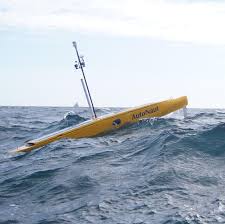
Breaking News
 Nancy Pelosi has officially announced her RETIREMENT at the end of her term, January 3, 2027.
Nancy Pelosi has officially announced her RETIREMENT at the end of her term, January 3, 2027.
 Omeed Malik: The Technocrat Muslim Billionaire Inside MAGA
Omeed Malik: The Technocrat Muslim Billionaire Inside MAGA
 Democrat-led government shutdown is now causing flight delays, threatening air traffic control,...
Democrat-led government shutdown is now causing flight delays, threatening air traffic control,...
Top Tech News
 HUGE 32kWh LiFePO4 DIY Battery w/ 628Ah Cells! 90 Minute Build
HUGE 32kWh LiFePO4 DIY Battery w/ 628Ah Cells! 90 Minute Build
 What Has Bitcoin Become 17 Years After Satoshi Nakamoto Published The Whitepaper?
What Has Bitcoin Become 17 Years After Satoshi Nakamoto Published The Whitepaper?
 Japan just injected artificial blood into a human. No blood type needed. No refrigeration.
Japan just injected artificial blood into a human. No blood type needed. No refrigeration.
 The 6 Best LLM Tools To Run Models Locally
The 6 Best LLM Tools To Run Models Locally
 Testing My First Sodium-Ion Solar Battery
Testing My First Sodium-Ion Solar Battery
 A man once paralyzed from the waist down now stands on his own, not with machines or wires,...
A man once paralyzed from the waist down now stands on his own, not with machines or wires,...
 Review: Thumb-sized thermal camera turns your phone into a smart tool
Review: Thumb-sized thermal camera turns your phone into a smart tool
 Army To Bring Nuclear Microreactors To Its Bases By 2028
Army To Bring Nuclear Microreactors To Its Bases By 2028
 Nissan Says It's On Track For Solid-State Batteries That Double EV Range By 2028
Nissan Says It's On Track For Solid-State Batteries That Double EV Range By 2028
Autonomous boat gets around under wave power

We're seeing many examples of auto manufacturers aiming to remove the human element from the driving experience, but there are also moves to get robot boats on the water, too. Dutch researchers have been looking into using autonomous vessels for cargo and people transport, the US Navy has demonstrated harbor patrols using unmanned swarmboats and the first electric container ship is due to transition from manned to remotely-operated over the coming years. Meanwhile hobbyists have been busying themselves developing long-haul unmanned surface vehicles powered by the sun, such as the Solar Charger and SeaCharger. Most of the autonomous watercraft we've seen so far follow traditional hull and propulsion designs. The AutoNaut is a little different, packing solar-powered sensors for monitoring marine wildlife and ocean conditions and getting to where it needs to be using energy harvested from the waves it rides on.




The AutoNaut story began way back in 1981 when a skipper aboard a 30 meter schooner wondered if it was possible to make use of the waves to propel a craft, rather than fighting against them. Mike Poole bashed together a rough prototype from an old filing cabinet, toy cogs and a mustard tin and tested it on local river waters. The idea proved to have merit.

 The Technocratic Dark State
The Technocratic Dark State Carbon based computers that run on iron
Carbon based computers that run on iron

